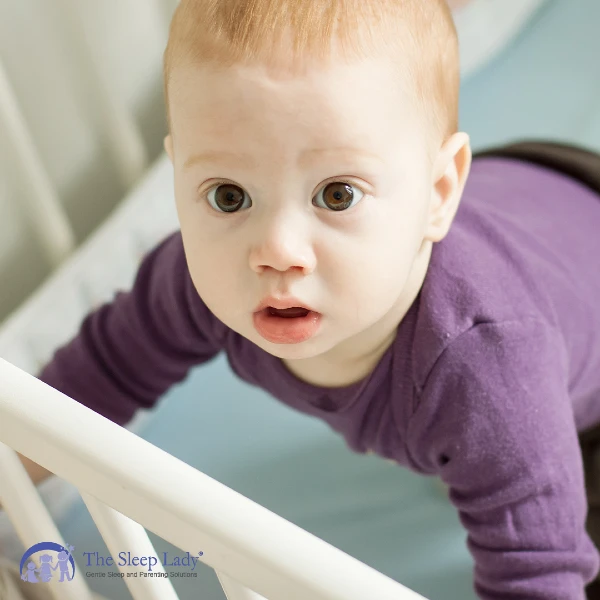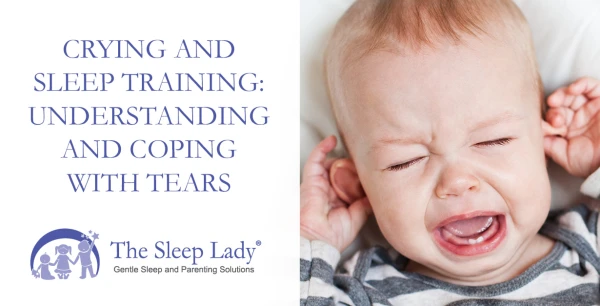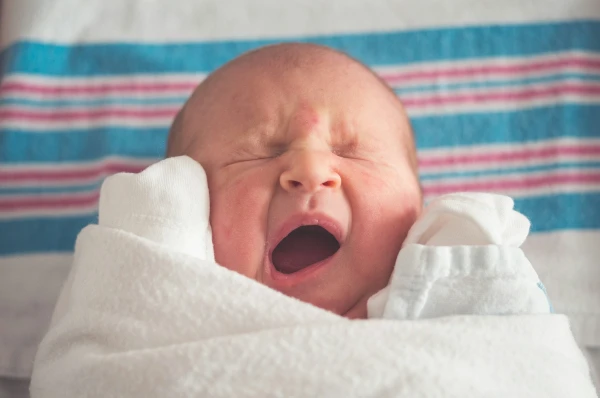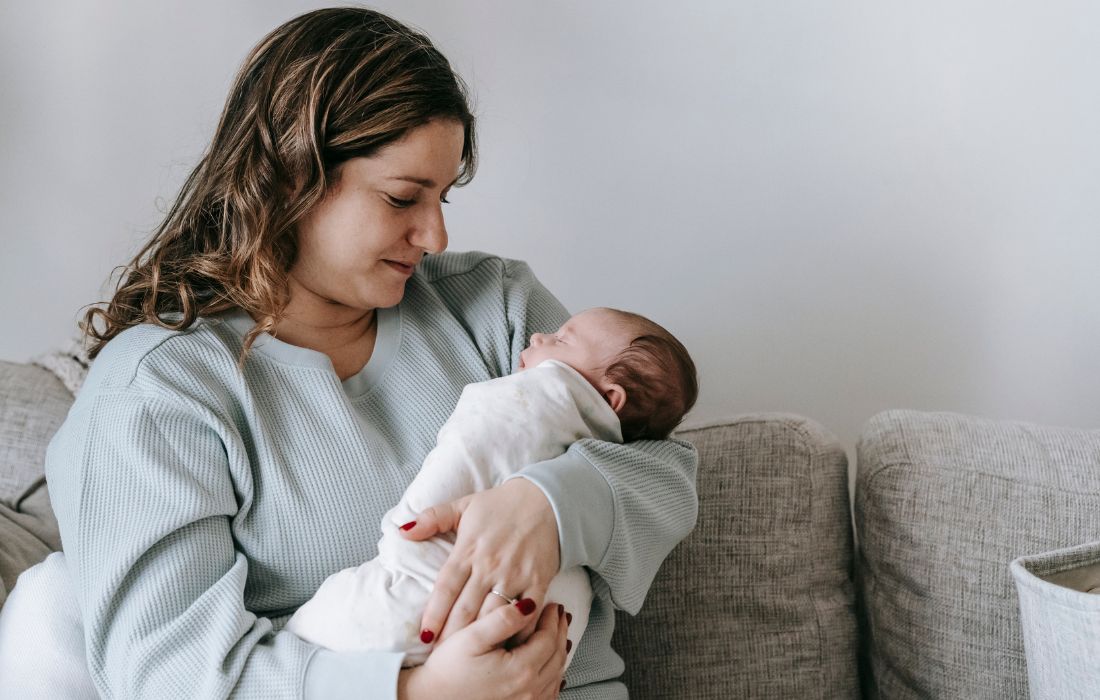What do you think of when you hear the words “sleep training” or “sleep coaching? Lots of non-stop crying? That’s a common concern for most parents who seek help with baby sleep and decide to begin sleep training.
While cry-it-out methods like Weissbluth’s (which is called extinction) and Ferber’s (which is called graduated extinction) work for some, they are too extreme for many people. Parents have difficulty following through, and therefore sleep coaching (what I prefer to call it) or training is not successful.
The Sleep Lady system is designed to minimize frustration and maximize reassurance. By being present, by offering physical and verbal reassurance, we reduce the stress on ourselves and on our children, but we won’t eliminate every single tear.
Tears Happen
Parents often tell me they can’t stand hearing their child cry, that they fear crying will scar a child or cause emotional damage. I don’t like hysterical babies any more than you do, and I certainly couldn’t have let my own babies wail in the dark. But there is no such thing as a tear-free childhood.
However, it’s easier for us as parents to tolerate the tears if we understand that they are a form of communication, and if we think about what our children are trying to tell us through their cries. When a young baby or toddler is crying, he is telling you that he wants or needs something. And that’s all his brain can concentrate on at that moment. When you calm him by helping him meet that need, his brain can focus on other things.
If you don’t respond to that need, if you repeatedly ignore the cries, it can lead to overstimulation and may lay the groundwork for later difficulties. Some research suggests that a pattern of unattended crying can actually affect the “wiring” of the brain. Now please note that I’m talking about a pattern of prolonged unattended crying. I don’t mean that a little bit of crying will destroy your child’s psyche or prevent him from forming a secure attachment. You will not scar your child for life if he fusses (safely) in his swing while you are right nearby taking a shower.
Naturally, we are less tolerant of crying with a newborn than we are with an older baby. That’s one reason I recommend only the gentlest of sleep-shaping techniques after 18 weeks of age and I don’t introduce my Sleep Lady Shuffle until a baby is six months old.
Factors that Affect Crying and Sleep Training
Age, your child’s temperament, and the consistency of your parenting are the three main factors that influence the amount of crying when sleep training. Two of those are, of course, not under your control. But since some crying is normal at every stage, it’s helpful to know ways to potentially reduce the amount of crying when sleep coaching.
Age
The Sleep Lady Shuffle was created for babies and children 6 months and older. Sometimes, with pediatrician’s approval, it is possible to start gentle sleep training with a healthy baby as early as 18 weeks. However, for most healthy, full-term babies, six to eight months is the ideal age to begin teaching babies to fall asleep on their own.
Between nine and twelve months, sleep training becomes a bit harder, as they reach some big milestones, like standing, crawling, and walking. They’re doing and learning more, and it is likely to be harder to sleep train — although not impossible.
After twelve months, the challenge becomes more difficult still. Around eighteen months, when separation anxiety kicks in again, sleep coaching can elicit more crying than in younger children.
At two, especially if a child is sleeping in a bed, things get really tricky. Toddlers have little impulse control, and without a crib to keep them in, they tend to pop out of bed regularly. Ideally, leaving a toddler in a crib until at least two-and-a-half years-old will help with sleep training as they will be better able to understand what you are asking of them. But, since climbing out poses a safety risk, some children will have to transition to a toddler bed earlier.

Temperament
It is widely believed that we’re born with a temperament and that it largely sticks with us for life. In my sleep practice, a large percentage of the children whose parents seek help with sleep are highly alert from birth, engaged with their surroundings, and often meeting milestones early.
The good news is, these alert child can have slightly higher IQs. The not-as-good news is that these alert children often have a harder time settling down at night, “turning off” their brains, and can have more disturbed sleep as a result. Make sure you don’t fall into the trap of thinking that an alert child needs less sleep than average. He needs just as much sleep as any other baby — maybe even a little more than average. These babies might be a bit more challenging to sleep coach and may cry more intensely than their more mellow peers.
Consistency
This is the one factor under your control. If you’ve tried to sleep train multiple times, used different methods, or started and stopped a few times, it can be confusing for a baby. Inconsistency can actually cause more crying.
Once you decide to begin sleep training, choose a method, make a plan, and stick to it — within reason.
RELATED: Sleep Training Your Baby: Options Beyond Crying it Out
Know Your Child’s Limitations
It’s very different to let an infant under six months old fuss or cry than it is to allow a two-year-old to cry. Make sure that your expectations for your child are reasonable, and that you take your child’s age and temperament into account.
Although sleep is a skill that you need to teach your child, you also need to ensure that your baby is developmentally ready to learn. Otherwise you’ll just end up with more tears, and a very frustrating situation. Many babies aren’t ready for sleep coaching on average until six months.
Once ready, pick a sleep coaching method, such as The Shuffle, and be consistent. With gentle reassurance, you should have a great sleeper on your hands with fewer tears than you thought!




